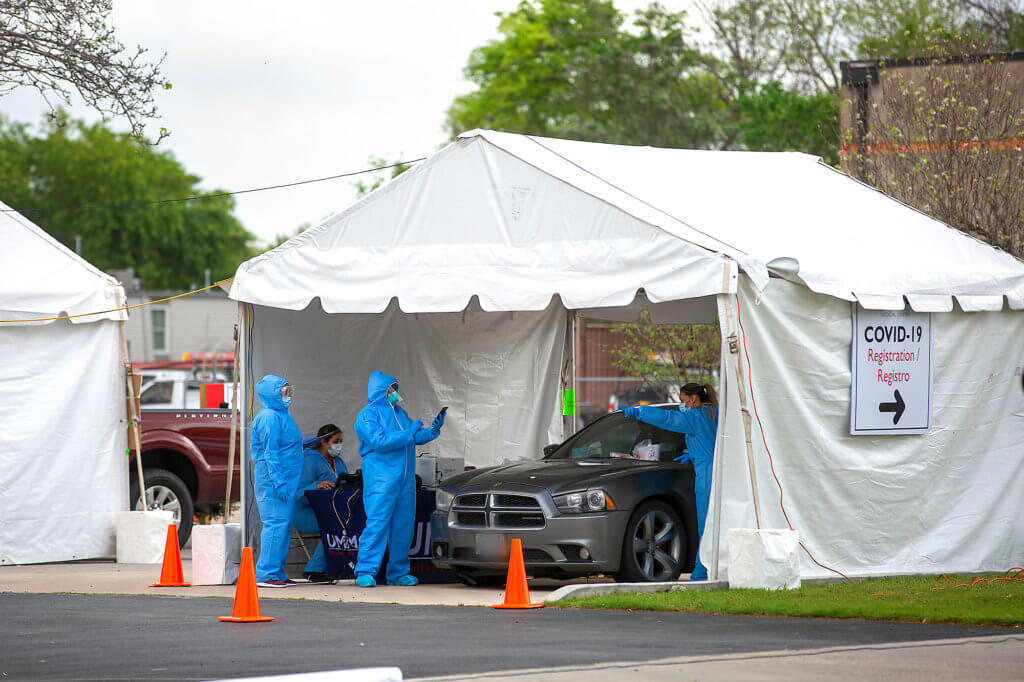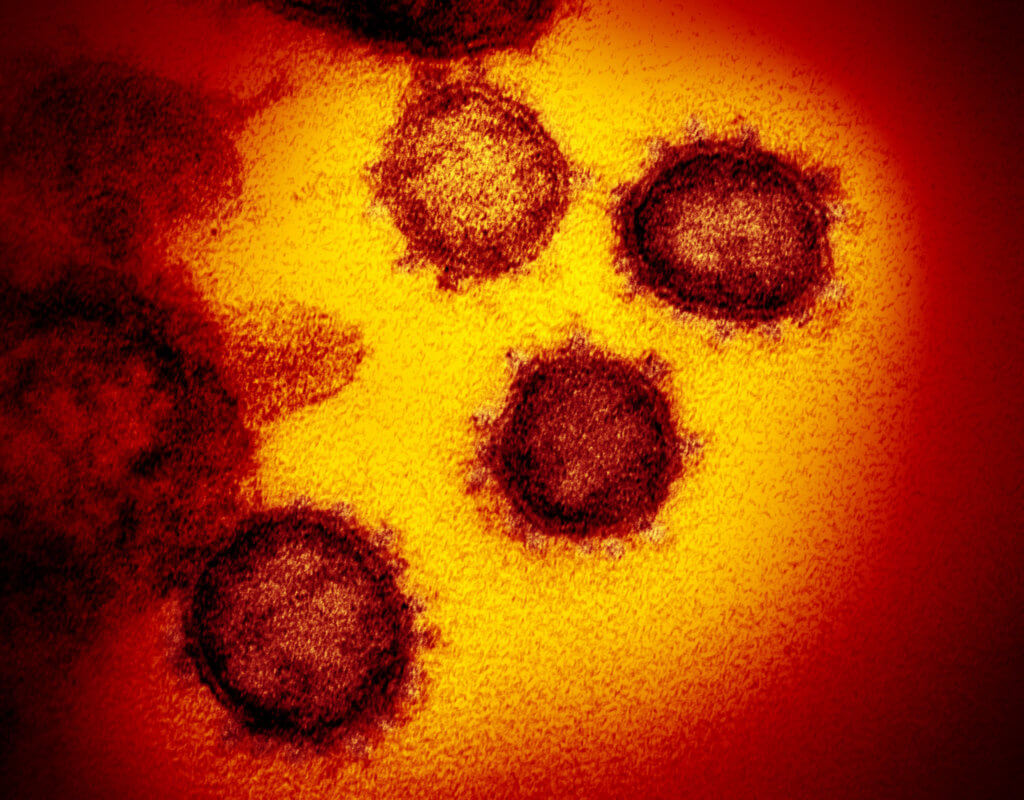COVID-19 crisis catalog: A glossary of terms

As a new coronavirus creates a crisis unprecedented in our lifetimes, there’s also been upheaval in our language.
TMC News has compiled a list of terms that are important to understanding the COVID-19 pandemic.
We’re not alone in our efforts to define and differentiate. On March 18, 2020, Merriam-Webster made an unscheduled update to its dictionary in response to the pandemic and those new words are denoted in red.
::::::::::::::::::::::::::::::::::::::::::::::::::::::::::::::::::::::::::::::::::::::::::::::::::::::::::::::::::::::::::::::::::::::::::::::::::::::
Looking for the latest on the CORONAVIRUS? Read our daily updates HERE.
::::::::::::::::::::::::::::::::::::::::::::::::::::::::::::::::::::::::::::::::::::::::::::::::::::::::::::::::::::::::::::::::::::::::::::::::::::::
We hope you find this page useful and check back regularly for updates.
UPDATE | May 26, 2020: Some of the newest COVID-19-related entries from Merriam-Webster are shown in dark purple in addition to words, in red, added by the dictionary in March. Words in black are from TMC’s reporting.
Acute respiratory stress syndrome (ARDS): a condition in which fluid builds up in the air sacs of the lungs. The fluid prohibits the lungs from getting enough air, leading to a deprivation of oxygen in the bloodstream. The condition is often fatal.
Asymptomatic: presenting no symptoms of disease. In the case of COVID-19, this means absence of fever, dry cough, sore throat, shortness of breath and body aches, among other less common symptoms. Notably, it is recommended that individuals do not get tested unless they exhibit symptoms because of the risk of false negatives. In other words, most tests will not be accurate unless symptoms are present.
Case fatality rate: the ratio of deaths from COVID-19 to the total number of individuals diagnosed with the disease.
Clinical trial: research experiments on human participants designed to answer questions about new treatments; in the case of COVID-19 and coronaviruses, the safety and efficacy of a potential vaccine.
Community spread: the spread of a contagious disease in a geographic area in which there is no knowledge of how someone contracted the disease. In other words, no known contact can be traced to other infected individuals.
Confirmed positive case: in contrast to a presumptive positive case, this is confirmation from the Centers for Disease Control and Prevention (CDC) of a positive COVID-19 test in an individual.
Contact tracing: identifying and monitoring people who may have come into contact with an infectious person. In the case of COVID-19, monitoring usually involves self-quarantine as an effort to control the spread of disease.
Contactless: without contact; for example, “contactless delivery” would include leaving purchased items at the entryway of a home rather than handing it directly to a person.
Containment area: a geographical zone with limited access in or out in an effort to contain an outbreak.
Coronavirus: a family of viruses that include SARS (severe acute respiratory syndrome) and MERS (Middle East respiratory syndrome) as well as other respiratory illnesses. A coronaviruses, also known as a CoV, is typically spread between animals and humans—an event known as zoonotic transfer—and they are named for the term “corona”—Latin for crown—which refers to the shape of the virus when observed microscopically.
COVID-19: COVID-19 stands for novel coronavirus disease 2019, which refers to the year of its initial detection. COVID-19 is the illness related to the current pandemic; the illness is caused by the virus SARS-CoV-2 (severe acute respiratory syndrome coronavirus 2).
Epidemic: a widespread occurrence of an infectious disease in a community or geographic area.
Epidemic curve: a graph or chart depicting the progression of an outbreak in a particular population.
Epidemiology: a branch of medicine which deals largely with public health, including the incidence, distribution, analysis and control of diseases.
Essential business: although this definition varies between cities and states based on individual restrictions, essential businesses are those that serve a critical purpose, such as grocery stores, pharmacies, waste collection, health care providers, gas stations, banks, transportation and agriculture services. This contrasts to non-essential businesses, which serve more recreational purposes.
Flattening the curve: an attempt to create a more gradual uptick of cases, rather than a steep rise, in an effort to avoid overburdening the health care system all once. Notably, “flattening the curve” does not necessarily decrease the projected number of cases, but spreads them out over a period of time.
Forehead thermometer: a device that measures body temperature through hovering near or contact with the forehead rather than traditional insertion.
Herd immunity: also known as community immunity, this is the reduction in risk of infection within a population, often because of previous exposure or vaccination.
Hydroxychloroquine: an oral drug used to treat malaria, rheumatoid arthritis and lupus. Its effectiveness in treating patients with COVID-19 disease is still in question.
Immune surveillance: the process of monitoring the immune system’s activities, which may include the detection and destruction of foreign substances, cells or tissues.
Immunosuppressed: an individual who experiences reduced efficacy of the immune system as a result of health conditions not related to COVID-19 disease. People who are immunosuppressed are at greater risk for hospitalization and severe sickness from the SARS-CoV-2 virus.
Incubation period: the time between when an individual is first exposed to the virus and the appearance of symptoms. A person’s level of contagion before symptoms arise is not known, although most experts believe people are most contagious after they begin exhibiting symptoms.
Index case: the first documented case of an infectious disease.
Index patient: the first person infected with a disease in an epidemic. Interchangeable with the term “patient zero.”
Intensivist: a physician who specializes in treating patients who are in intensive care or in intensive care units.
Lockdown: an emergency measure in which individuals are restricted from certain areas in an attempt to control exposure or transmission of disease. In a lockdown during an epidemic, individuals are encouraged to stay home.
National emergency: a state of emergency resulting from the global threat of the pandemic. On March 13, 2020, President Trump issued a national emergency concerning the COVID-19 outbreak, which allowed for loosened restrictions on tele-health as well as certain requirements for hospitals and health care providers to allow them to respond to the crisis.
Novel coronavirus: a new strain of coronavirus, or nCoV, that has never been detected in humans.
Pandemic: a worldwide spread of an infectious disease, with larger reach than an epidemic. Until COVID-19, the last pandemic was the H1N1 influenza outbreak in 2009.
Patient zero: the first individual infected with a disease during an epidemic.
Person-to-person transmission: when a virus is spread between people, including physical contact or coughing and sneezing. This is in contrast to when a virus is spread via animals or through contaminated objects or surfaces.
Physical distancing: the practice of maintaining greater space between oneself and others and/or avoiding direct contact with other people.
PPE: personal protective equipment, or PPE, is specialized clothing and equipment used as a safeguard against health hazards including exposure to infectious diseases through physical contact or airborne particles. PPE is designed to protect parts of the body typically exposed in normal attire, including the nose, mouth, eyes, hands and feet. Notably, N95 respirators are considered ideal for health care workers who may be exposed to SARS-CoV-2.
Pre-symptomatic: an infected individual who is not yet displaying symptoms of an illness or disease.
Presumptive positive case: an individual who has tested positive for COVID-19 by a local public health lab, but whose results are awaiting confirmation from the CDC.
PUI: person under investigation, or a PUI, is an individual who is suspected of potentially having COVID-19.
Remdesivir: an investigational antiviral drug that is administered intravenously and inhibits viral replication. It is a promising drug for the treatment of COVID-19 disease and was first developed to treat Ebola.
Respirator: a device designed to protect individuals from inhaling something hazardous in the air, in this case, particulate that may be contaminated with the SARS-CoV-2 virus.
SARS-CoV2: the virus fully defined as “severe acute respiratory syndrome coronavirus 2” causes the disease COVID-19.
Screening: the act of verifying symptoms and potential exposure before testing for the virus.
Self-isolation: the act of separating oneself from others.
Self-quarantine: the act of refraining from any contact with other individuals for a period of time—in the case of COVID-19, two weeks—to observe whether any symptoms of the disease will arise after potential exposure.
Shelter-in-place: typically issued by local government, a shelter-in-place asks residents to remain at home and only leave to perform duties deemed essential in an effort to slow transmission of and exposure to the virus.
Social distancing: the act of remaining physically apart in an effort to stem transmission of COVID-19. Social distancing can include a move to remote work, the cancellation of events and remaining at least six feet away from other individuals.
Spanish flu: also known as the 1918 influenza pandemic, this was the most severe pandemic in recent history according to the Centers for Disease Control and Prevention (CDC), with an estimated 500 million infections and 50 million deaths worldwide. It was caused by an H1N1 virus with genes of an avian origin.
Super-spreader: a highly contagious individual who can spread an infectious disease to a large number of uninfected people through a network of contacts.
Symptomatic: showing symptoms of COVID-19, which can include a fever, dry cough, shortness of breath and body aches. Health officials believe the risk of transmitting the virus is highest when an individual is symptomatic.
Vaccine: a biological preparation of organisms that provides immunity to a particular infectious disease. Currently, there is no vaccine for COVID-19.
Ventilator: a machine designed to move air in and out of the lungs for a patient who is physically unable to breathe or who is not breathing well. Because COVID-19 can cause severe lower respiratory infection, ventilators are a critical machine for patients with severe disease.
WFH: an abbreviation of “working from home” or “work from home.”




